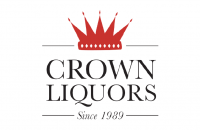7 Signs for Growing Retail Chains to Upgrade ERP
 It can be hard to know when it’s time to take the leap to more expensive, comprehensive software solutions.
It can be hard to know when it’s time to take the leap to more expensive, comprehensive software solutions.
It’s not always as clear as you might imagine where the border between “small retail” and “mid-sized retail” exists, and what’s realistic to expect in terms of the benefits of investing more into your IT infrastructure.
Rather than wait for the negatives of growing pains as your signal that you need to upgrade ERP retail technology suite, there are a few telltale flags that it might be time to look at solutions targeted at the mid-sized market. With thirty years of experience helping retailers to make that transition, Magstar has developed a keen sense for whether a retailer is ready to take the plunge. If you find yourself saying any of the below, it’s time to start researching your options for a comprehensive software package like ERP.
I have ambitious plans to grow – I expect to add between three and twenty locations over the next ten years (including online shopping storefronts).
This is the biggest and most obvious sign that you’re no longer a small player; if you’re in a position to plan and anticipate an expansion past the point of having three or four locations, you’ve definitely outgrown the kind of technology solution that worked well enough to get you to your current level of success.
The very act of adding more locations makes it increasingly unfeasible to depend on the small-scale, non-integrated kinds of solutions that are just right for a small retailer with one or two stores. As your operations expand, it gets more difficult to manage your business if you don’t have consistency and clarity throughout your organization. Being able to centralize your data (i.e. have a view of your data that is the same across every store, and stays that way as it gets updated) means accuracy in business planning – being able to automate previously manual functions (e.g. sending daily sales reports to head office, tracking employee hours, or generating reports) means fewer hours wasted for you and your increasing numbers of staff.
This is the critical turning point where you have to think carefully about the solution you invest in – a cheaper software suite may meet your needs right now, but if it doesn’t have the ability to meet your needs five years from now, you’re going to end up reinvesting and enduring the stress of a major implementation all over again.
I have a warehouse or a distribution center, or I plan to have one.
Investing in a warehouse is one of the most important steps for creating a smooth, efficient supply chain. Once you’re established with a warehouse, you can store extra product, send products to various locations, or ship to customers directly from the warehouse – it’s another obvious move from small retail to mid-sized. If you don’t yet have a warehouse or a need for one, you may not need to look into upgrading your business software just yet.
For those retailers utilizing distribution centers, however, sophisticated software can dramatically improve the flexibility and efficiency of your operations. One red flag that it’s time to upgrade: warehouse employees depending on pen-and-paper. Replacing a clipboard with a mobile warehouse management device is the difference between localized, easily lost information and realtime updates to your product location data visible from any store or office in your business.
If the idea of always knowing the location and quantity of your store’s merchandise at any point of the supply chain is both foreign and appealing to you, your current software setup is probably not meeting all of your needs.
My business is currently generating at least 10 million dollars of annual revenue.
Ten million is a great success as well as a great marker for when you can reasonably justify the expense of a robust end-to-end software suite. For a large IT expense like an Enterprise Resource Planning suite designed to meet the needs of the mid-sized retail market, you should expect to invest between 0.5% and 1% of your revenue. If your business is under the ten million benchmark, you might not be ready to switch to a more premium solution.
If that sounds like a lot of money to spend on an IT project, carefully consider what your budget is and what you expect the ROI to be. Take an honest look at your operations and your current technology and review what the shortcomings are; where is your technology holding you back, and how much money will you be saving or additional profit will you be earning by eliminating old inefficiencies and adding new functionalities? A ten million dollar business using hundred-dollar software is missing an opportunity to dramatically improve profitability across the entire business; a five million dollar business looking to implement a piece of technology with a hundred thousand dollars’ worth of complex modules and customizations may be putting the cart ahead of the horse.
My current accounting solution is either manual or software-based but not natively integrated with my POS, and that makes me nervous.
An integrated system that forges seamless connections between each element of your store’s technology has a lot of benefits – one of the most practical ones is the addition of perpetual accounting. Perpetual accounting gives companies real-time information regarding inventory on hand and instantaneously and constantly up-to-date numbers in their general ledger, utilizing sales data being generated at the point of sale and using that to automatically update the appropriate systems throughout the business.
If you’re looking at your current accounting setup and realizing it has a lot of manual processes like data input, you may be staring at a giant security vulnerability. Over thirty years of being in business, Magstar has seen multiple clients discover significant amounts of money being lost to employee theft when less scrupulous individuals take advantage of these manual processes and the gap in the system that they represent. The more employees you have and the higher your revenue, the more imperative it becomes to switch to perpetual accounting and eliminate that gap.
My business is a retail franchise with a few locations and my franchisees like to have control over their data.
Companies using the franchise model to flourish and grow have a lot of benefits and strengths over the chain store model; the drawback when it comes to IT can be that there is a large amount of resistance to centralization of data and complete transparency across the business, even for the purpose of analytics. This doesn’t mean that it’s impossible to find an end-to-end retail software suite that gives you all the advantages of traditional ERP while accommodating your franchisees’ individual needs and management styles. In fact, this may be a good indication that you ought to push to move to a consistent POS and head office platform across your brand now instead of later: the longer you leave it, the more likely it becomes that individual store managers will invest in a myriad of solutions that they will be reluctant to move away from.
Setting yourself and your franchises up with one robust software early on ensures consistency and reliability going forward, especially as you add new stores and new franchisees and immediately start them on the same system. If they all use the same technology, they can all depend on the same support team and implementation team, making it easier for the software vendor to provide you with high-quality service based on familiarity with your business.
A good ERP provider will be able to accommodate your business model and ensure that data travels throughout your organization in strict accordance with each franchisee’s business rules. As long as you ensure that the retail software platform you’ve chosen for your initial investment is flexible and scalable in the long-term, making the move to mid-sized retail technology at the right moment will prevent a lot of headaches in the future.
My business does several unique things that we accomplish using a homegrown or highly customized software.
Complexity in IT can be either a marker of bad practice or cutting-edge sophistication, and it takes a seasoned software vendor to be able to tell the difference between the two. If you’re having to invest a lot of time into making your software solution function the way you need it to, stop and examine your current state of affairs. Are you doing a simple thing in a complicated way because your current technology isn’t natively capable of meeting the needs of your business? (Are you taping twigs together trying to build yourself a mast?) Are you using in-house solutions that are draining your IT resources and are getting increasingly difficult to keep modernized as they get more convoluted?
It may be time to get an expert on-site to scrutinize not just what your technology set-up does but why you’re having it do those things. On the one hand, it may be high time for you to give up the ghost and just buy better software if you’re tying yourself in knots to convince a simpler solution to become what you really need. On the other hand, it may be that your business has a genuine need for a complex, unique process that gives you a competitive edge and makes your operations or customer experience significantly better. In that situation, there’s a case to be made for handling that project to a knowledgeable vendor to free up your IT resources and ensure that the tricky process is given the attention it deserves. This allows you the same control as a home-grown solution while ensuring it’s built on retail technology best practices and integrates seamlessly with all your standard software.
I plan to use reporting and analytics to make better decisions that support growth and profitability.
Part of having ambitious plans for growth is understanding the value of examining your data for actionable insight. To succeed in the harsh landscape of retail, a business owner really needs to know what they’re doing. Historically, that meant having a leader who depended on an intuition that was founded in direct and extensive industry experience. Today, those leaders are enhancing their own knowledge with the kind of knowledge they can gain from business intelligence applications that crunch transactional data and CRM data and offer greater transparency into the motives of the consumer.
Business intelligence as a practice has become incredibly scientific; the biggest of retailers employ entire departments of engineers and statisticians as analysts for the vast quantities of data generated in their stores and among their target markets. Although that isn’t feasible for smaller players in the retail industry, the best practices of these initiatives can be scaled down to suit the operations of a mid-sized retailer.
If deep analytics into store operations and customer preferences are a priority for you as part of your ongoing strategy, you need to move to a software platform that will support that goal. Technology intended for small retailers rarely offers more than rudimentary reporting and analytics – if you feel like you need more than just the basics, that’s a strong indication that you’re ready to move to a solution for mid-sized retailers.
RECENT POSTS
 Crown Liquors Leverages Magstar Total Retail to Streamline Curbside Pickup and DeliveryThis checklist of common growing pains will help small [...]
Crown Liquors Leverages Magstar Total Retail to Streamline Curbside Pickup and DeliveryThis checklist of common growing pains will help small [...] Brick-and-Mortar Is Here to Stay. 3 Reasons Why You Should Adopt a Hybrid Retail Strategy in 2023This checklist of common growing pains will help small [...]
Brick-and-Mortar Is Here to Stay. 3 Reasons Why You Should Adopt a Hybrid Retail Strategy in 2023This checklist of common growing pains will help small [...] How Precise Inventory Planning Boosts Customer Satisfaction and Drives Retail SuccessThis checklist of common growing pains will help small [...]
How Precise Inventory Planning Boosts Customer Satisfaction and Drives Retail SuccessThis checklist of common growing pains will help small [...]